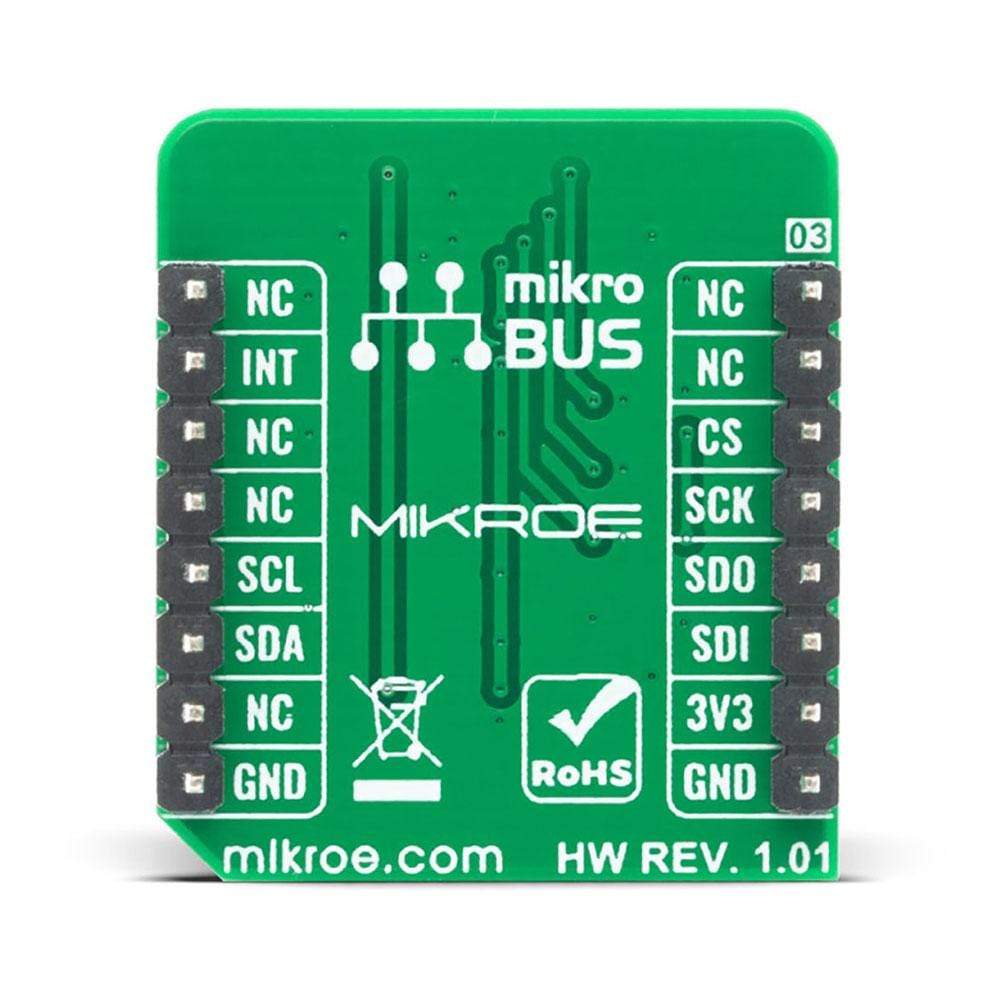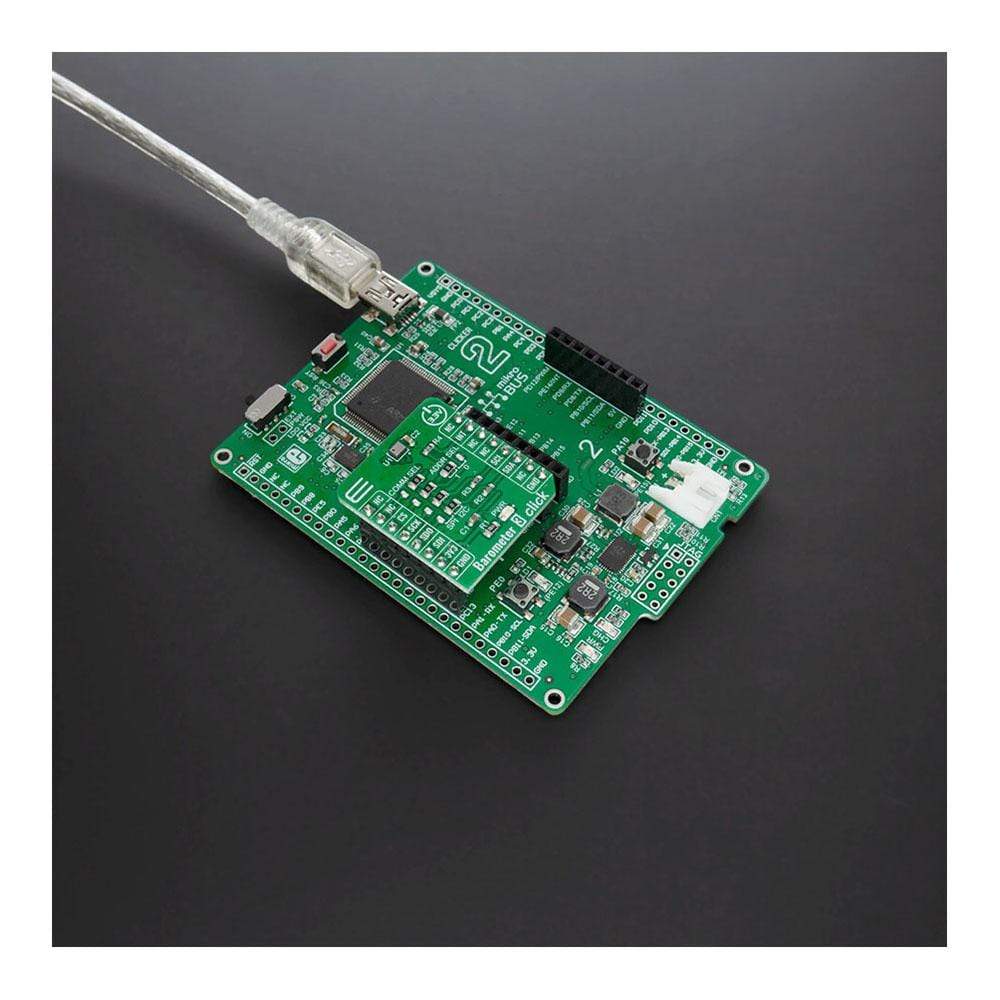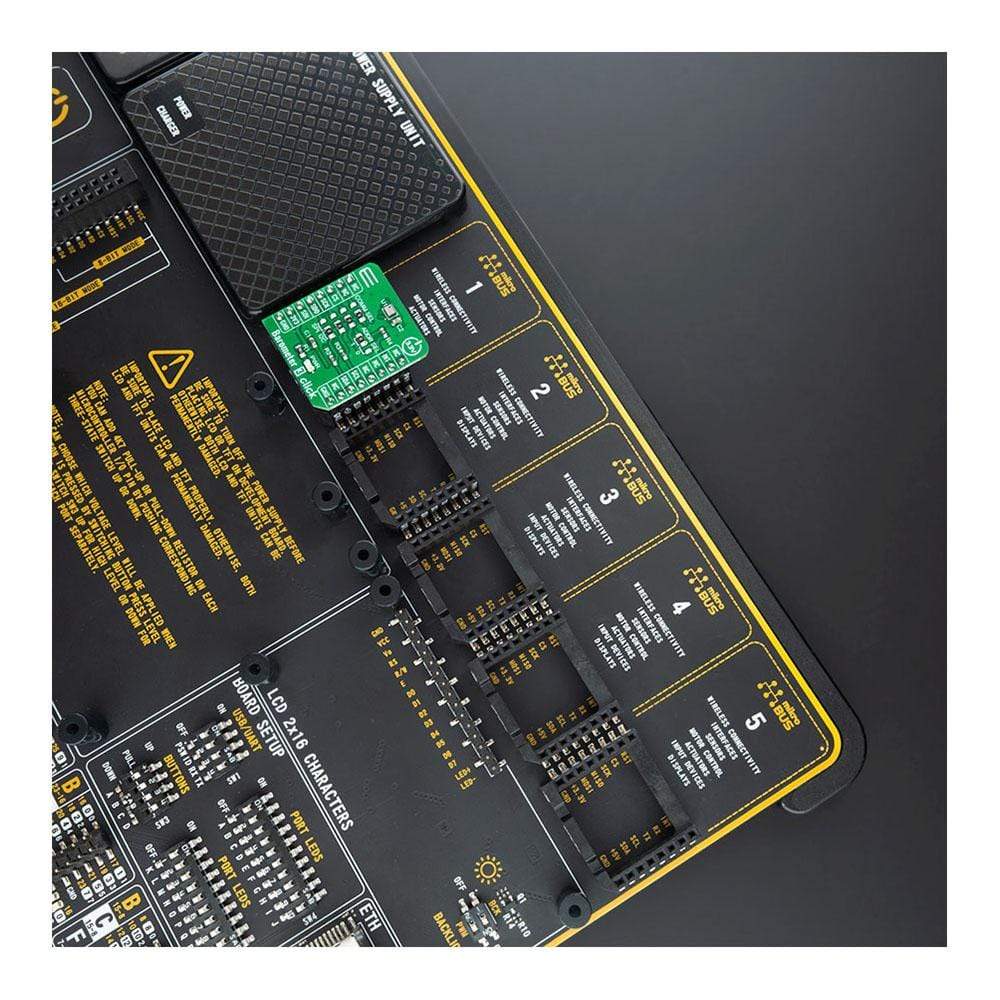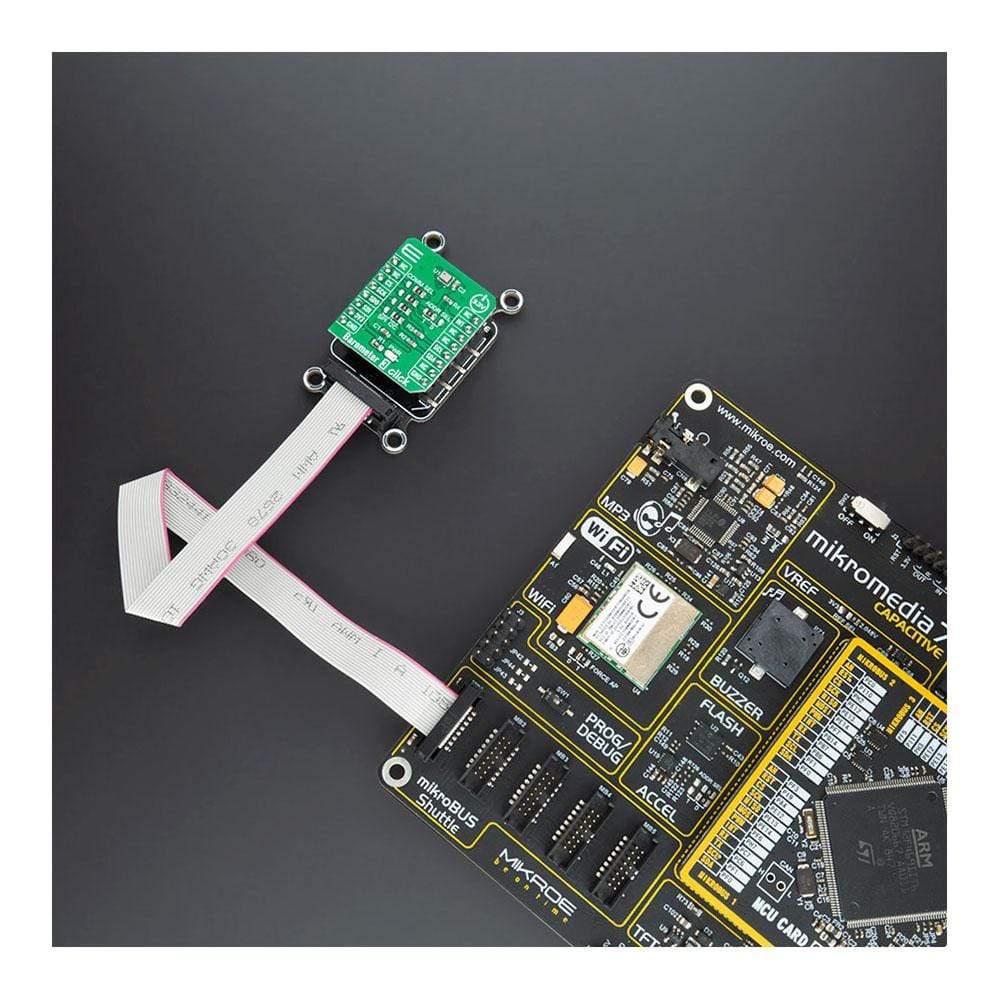





Overview
The Barometer 3 Click Board™ is a compact add-on board for applications that require digital barometric air pressure measurement. This board features the DPS368, a digital barometric air pressure sensor from Infineon. It offers high accuracy and low current consumption, capable of measuring both pressure and temperature. The pressure sensor element is based on a capacitive sensing principle which guarantees high precision during temperature changes and due to its robustness it can be used in a harsh environment. Its also ideally suited for wearable sensors (such as fitness tracking, step counting, fall detection), home appliances (for airflow control in HVAC, water level detection, intruder detection) and health care (for fall detection, airflow monitoring, smart inhalers).
The Barometer 3 Click Board™ is supported by a mikroSDK compliant library, which includes functions that simplify software development. This Click Board™ comes as a fully tested product, ready to be used on a system equipped with the mikroBUS™ socket.
Downloads
Das Barometer 3 Click Board™ ist eine kompakte Zusatzplatine für Anwendungen, die eine digitale barometrische Luftdruckmessung erfordern. Diese Platine enthält den DPS368, einen digitalen barometrischen Luftdrucksensor von Infineon. Er bietet eine hohe Genauigkeit und einen geringen Stromverbrauch und kann sowohl Druck als auch Temperatur messen. Das Drucksensorelement basiert auf einem kapazitiven Sensorprinzip, das eine hohe Präzision bei Temperaturänderungen garantiert und aufgrund seiner Robustheit in rauen Umgebungen eingesetzt werden kann. Es eignet sich auch ideal für tragbare Sensoren (wie Fitness-Tracking, Schrittzähler, Sturzerkennung), Haushaltsgeräte (für die Luftstromregelung in HLK-Anlagen, Wasserstandserkennung, Einbruchserkennung) und das Gesundheitswesen (für Sturzerkennung, Luftstromüberwachung, intelligente Inhalatoren).
Das Barometer 3 Click Board™ wird durch eine mikroSDK-kompatible Bibliothek unterstützt, die Funktionen enthält, die die Softwareentwicklung vereinfachen. Dieses Click Board™ wird als vollständig getestetes Produkt geliefert und ist bereit für den Einsatz auf einem System, das mit der mikroBUS™-Buchse ausgestattet ist.
| General Information | |
|---|---|
Part Number (SKU) |
MIKROE-4190
|
Manufacturer |
|
| Physical and Mechanical | |
Weight |
0.017 kg
|
| Other | |
Country of Origin |
|
HS Code Customs Tariff code
|
|
EAN |
8606027380167
|
Warranty |
|
Frequently Asked Questions
Have a Question?
Be the first to ask a question about this.






